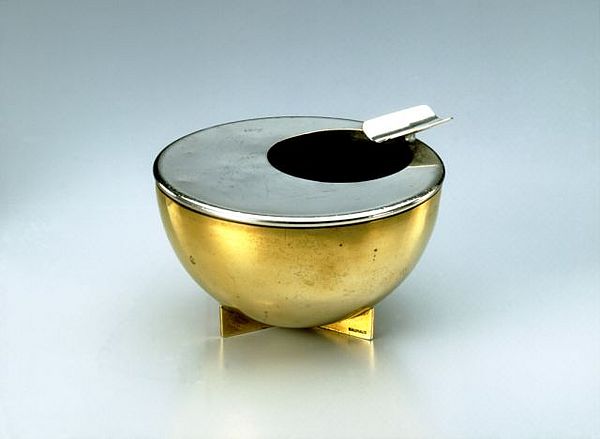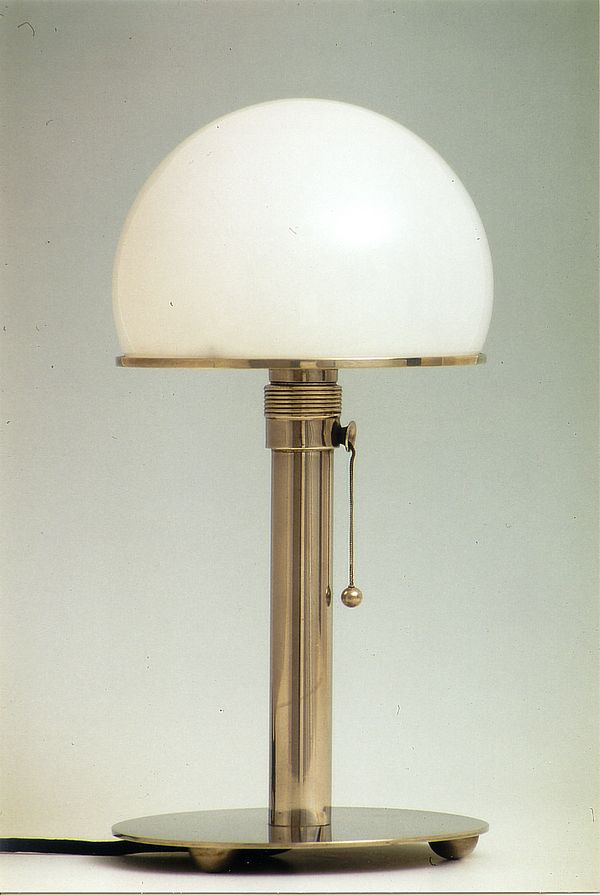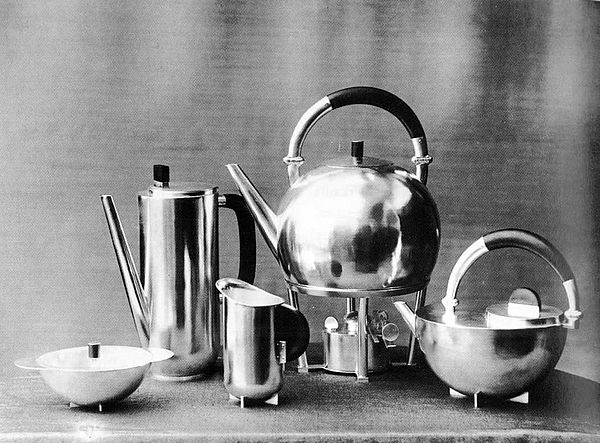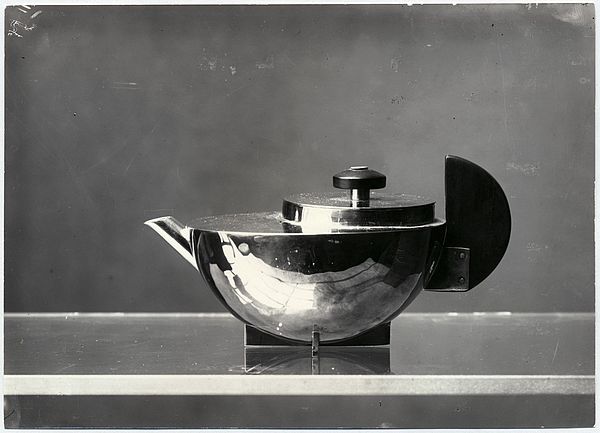Metal
1919–1933 (from 1929 fitting-out workshop)
From 1923 the former gold, silver and copper forge in Weimar evolved into a design laboratory. It was here that Marianne Brandt and Wilhelm Wagenfeld created the Bauhaus lamp WA24 and the tea infuser.
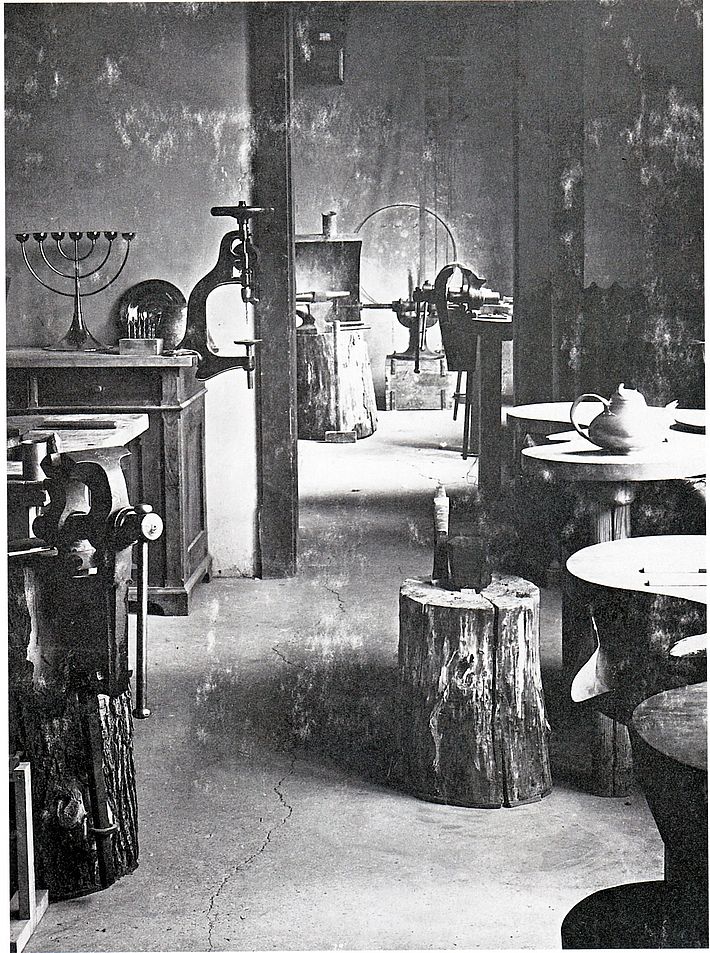
Masters and Teachers
Johannes Itten
László Moholy-Nagy
Alfred Arndt
Marianne Brandt
[Translate to English:] Headline
The work in the metal workshop also began in 1919. The workshop initially consisted of a gold-, silver- and coppersmithy, which was led by the Bauhaus master and painter Johannes Itten. In 1922, the silversmith Christian Dell took over as master of works. Following Itten’s departure in 1923, the workshop developed in a new direction with the Hungarian Constructivist László Moholy-Nagy. Instead of individual pieces, prototypes were now made for mass production. In order to manufacture the individual models, a production line was established. This is where objects such as the table lamp by Karl Jacob Jucker and Wilhelm Wagenfeld, the tea infuser by Wolfgang Tümpel and the ashtrays by Marianne Brandt were produced.
In Dessau, the metal workshop focused primarily on the design and production of lamps to furnish the newly constructed Bauhaus building. From this time on, the models received consecutive numbers and the designation “ME” (abbr. metal). In 1928, the metal workshop was again restructured by the new Bauhaus director, Hannes Meyer, and it was temporarily supervised by Marianne Brandt.
Cooperation contracts were signed with the lamp manufacturers Schwintzer & Gräff in Berlin and Körting & Mathiesen (Kandem) in Leipzig. This resulted in the Kandem desk and nightstand lamp by Marianne Brandt and Hin Bredendieck. A year later, the metal workshop was incorporated into the interior design workshop under Alfred Arndt, until it was finally absorbed by the interior design department in 1932.
